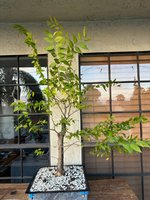zeejet
Mame
Recently picked up a decently sized Southern Hackberry (Celtis laevigata) with a trunk that measures ~2 feet tall and 2 inches diameter thickness.
This is a rather tall tree for the current girth and I’m considering air layering the top half which would result in two decently thick trunks for development (top airlayer as a smaller tree). Will this species airlayer relatively easily? What happens if you girdle a section that has major cut wounds?
If the air layer fails, I’ll still have the bottom half to work with as a standard trunk chop but if this species doesn't air layer well, I may just perform a chop.
For now, I suppose I'm leaving it to regain vigor for the rest of the year and starting the airlayer next sring/summer?
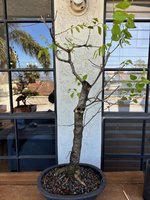
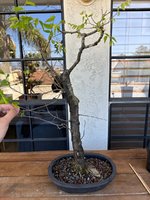
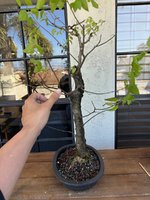
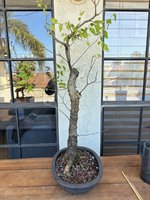
Last photo is my proposed airlayer and subsequent chop for the lower section after the airlayer is harvested.

This is a rather tall tree for the current girth and I’m considering air layering the top half which would result in two decently thick trunks for development (top airlayer as a smaller tree). Will this species airlayer relatively easily? What happens if you girdle a section that has major cut wounds?
If the air layer fails, I’ll still have the bottom half to work with as a standard trunk chop but if this species doesn't air layer well, I may just perform a chop.
For now, I suppose I'm leaving it to regain vigor for the rest of the year and starting the airlayer next sring/summer?




Last photo is my proposed airlayer and subsequent chop for the lower section after the airlayer is harvested.


